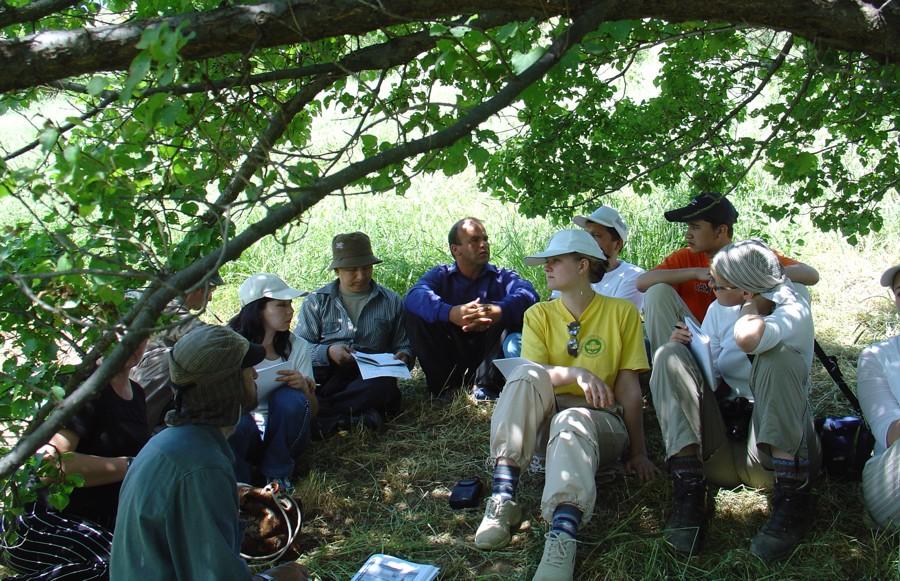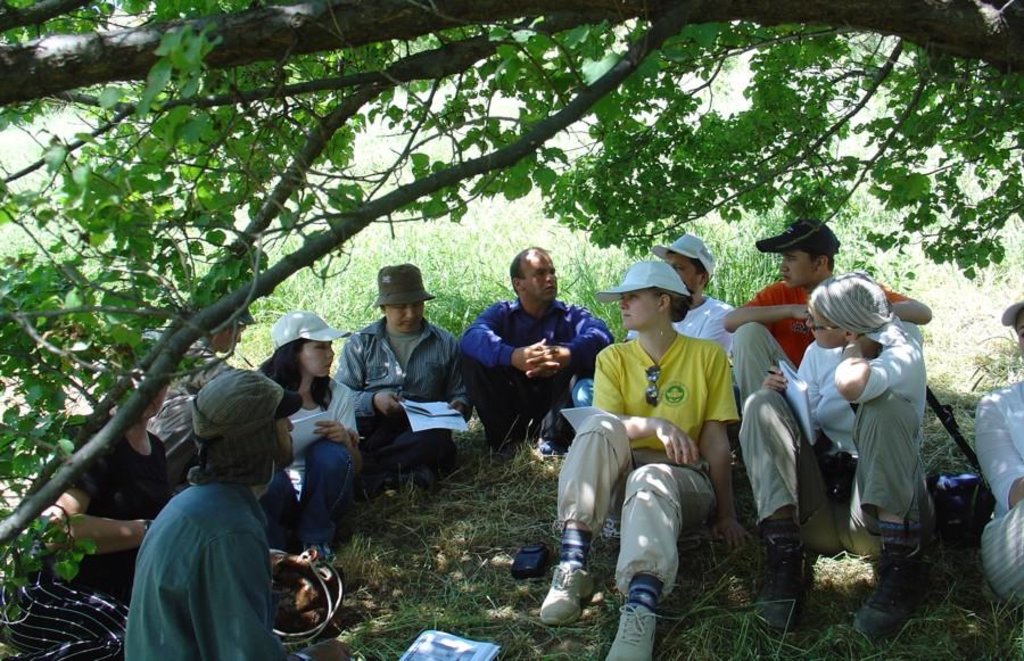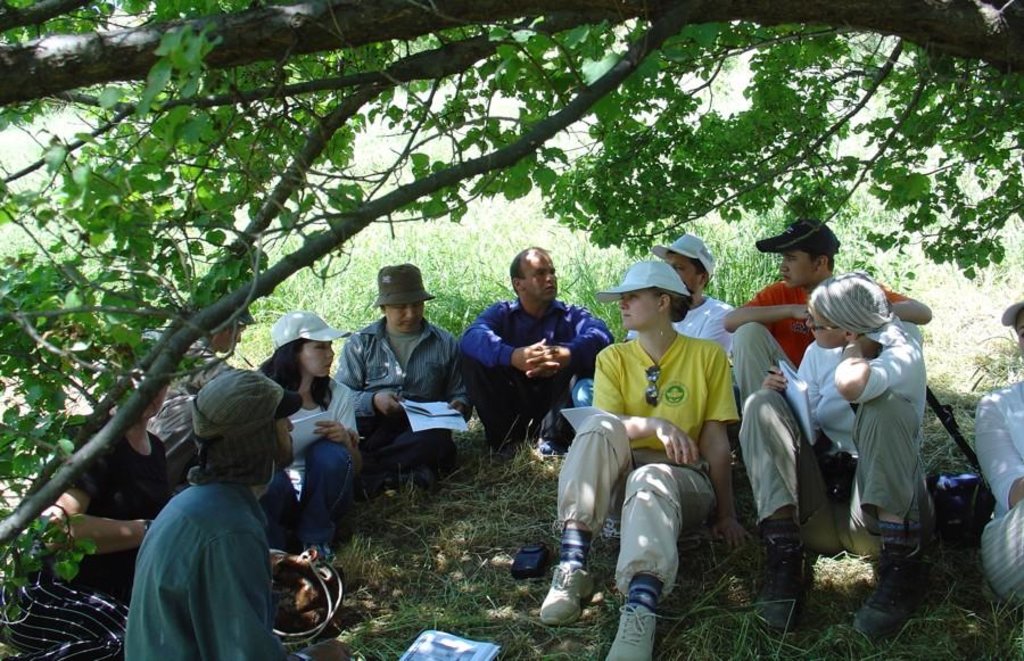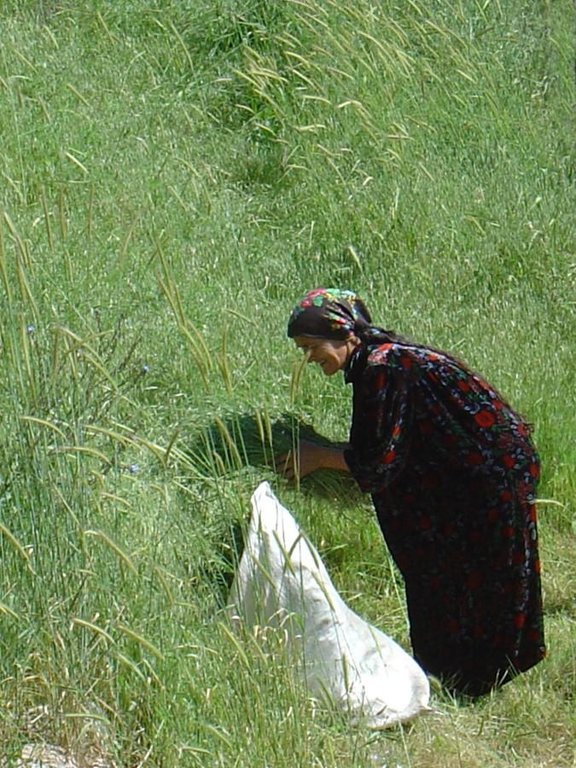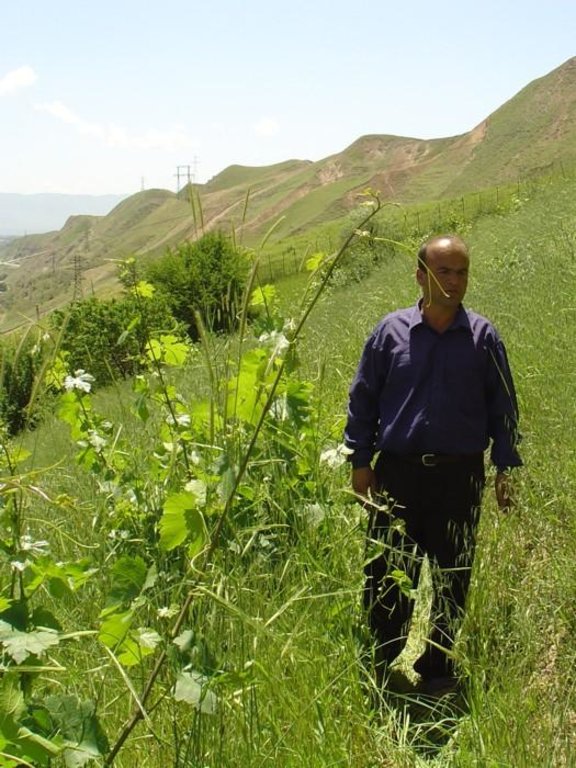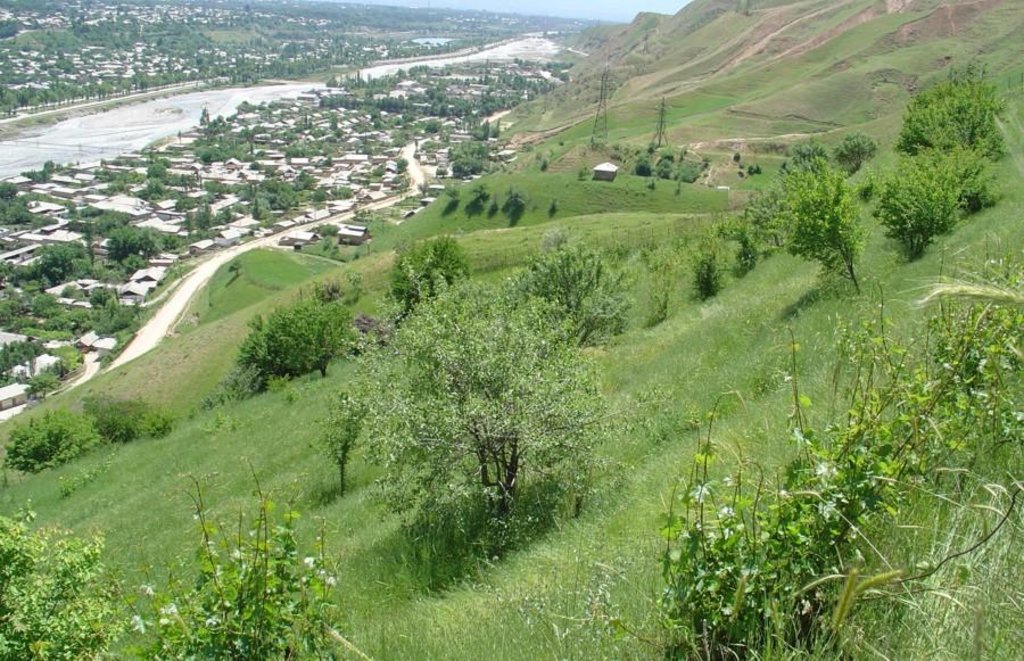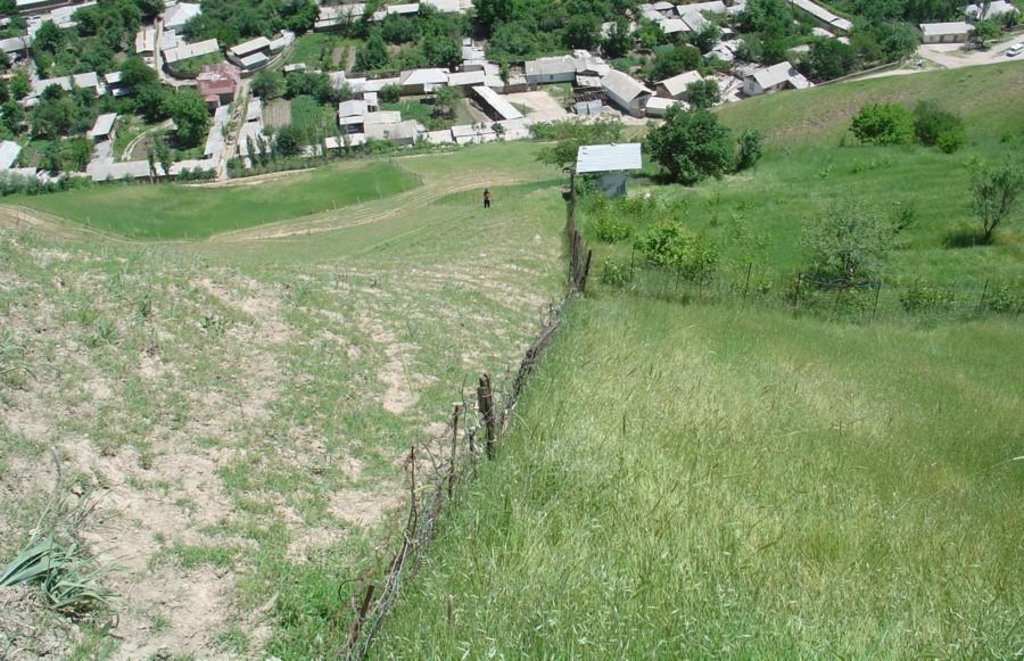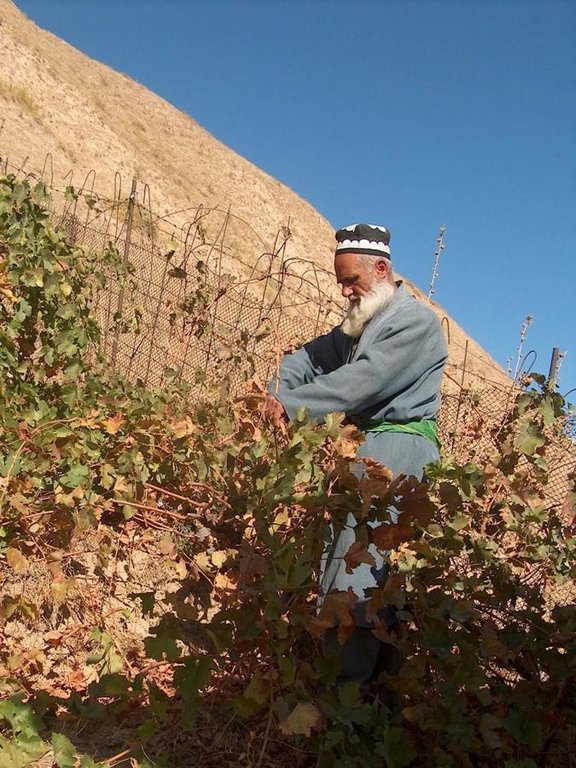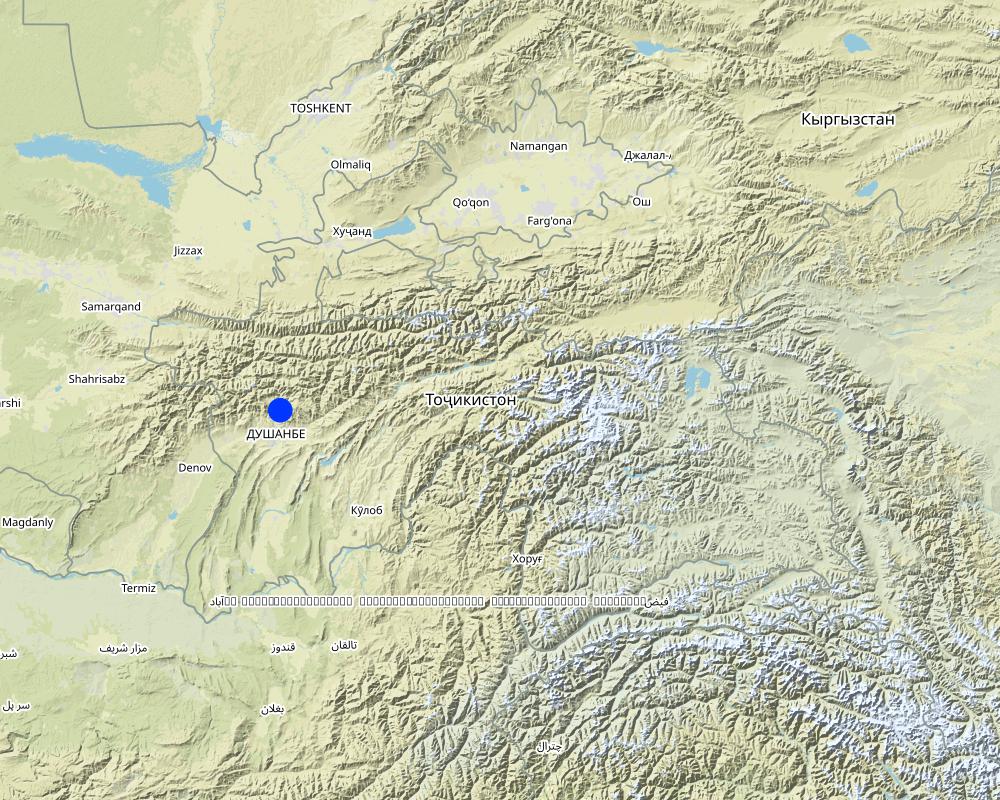Farmer innovation and self-help group [Tayikistán]
- Creación:
- Actualización:
- Compilador: Murod Ergashev
- Editor: –
- Revisores: David Streiff, Alexandra Gavilano, Deborah Niggli, Joana Eichenberger
approaches_2661 - Tayikistán
- Resumen completo en PDF
- Resumen completo en PDF para imprimir
- Resumen completo en el navegador
- Resumen completo (sin formato)
- Farmer innovation and self-help group: 2 de noviembre de 2021 (public)
- Farmer innovation and self-help group: 4 de abril de 2018 (inactive)
- Farmer innovation and self-help group: 8 de agosto de 2017 (inactive)
- Farmer innovation and self-help group: 7 de agosto de 2017 (inactive)
- Farmer innovation and self-help group: 5 de julio de 2017 (inactive)
Visualizar secciones
Expandir todo Colapsar todos1. Información general
1.2 Detalles de contacto de las personas de referencia e instituciones involucradas en la evaluación y la documentación del Enfoque
Usuario de la tierra:
Sharif Aliev family
Khagatai Village, Rayon of Varzob
Tayikistán
Nombre del proyecto que facilitó la documentación/ evaluación del Enfoque (si fuera relevante)
Book project: where the land is greener - Case Studies and Analysis of Soil and Water Conservation Initiatives Worldwide (where the land is greener)Nombre del proyecto que facilitó la documentación/ evaluación del Enfoque (si fuera relevante)
Pilot Program for Climate Resilience, Tajikistan (WB / PPCR)Nombre de la(s) institución(es) que facilitaron la documentación/ evaluación del Enfoque si fuera relevante)
CAMP - Central Asian Mountain Partnership (CAMP - Central Asian Mountain Partnership) - Kirguistán1.3 Condiciones referidas al uso de datos documentados mediante WOCAT
El compilador y la/s persona(s) de referencia claves aceptan las condiciones acerca del uso de los datos documentados mediante WOCAT :
Sí
1.4 Referencia/s al/los Cuestionario(s) de Tecnologías MST
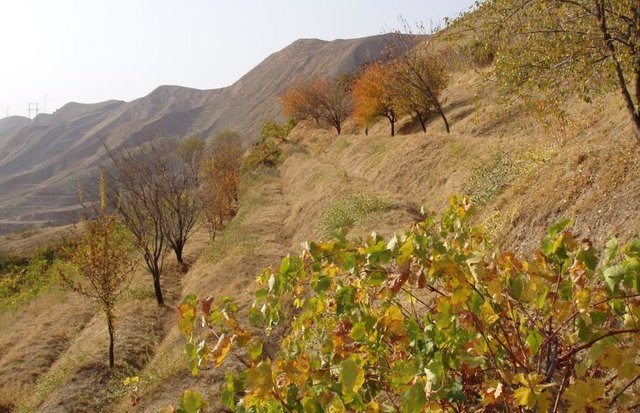
Conversion of grazing land to fruit and fodder … [Tayikistán]
Fencing part of an overgrazed hillside, combined with terracing, manuring and supplementary irrigation for grape, fruit and grass production.
- Compilador: Loes Masselink
2. Descripción del Enfoque MST
2.1 Breve descripción del Enfoque
An innovative land user, assisted by a self-help group has overcome many administrative and technical problems to establish a fruit garden on previously degraded communal grazing land.
2.2 Descripción detallada del Enfoque MST
Descripción detallada del Enfoque MST:
Aims / objectives: Although in the 1980s the soviet government supported the establishment of private gardens in specified areas, the lack of irrigation water and suitable land often restricted this process. That was the case for Khagatai village, situated on the narrow valley floor of the Varzob River, below steep loess slopes. This marginal area is used for grazing and shows severe signs of water erosion; the hillsides are considered to be of little agricultural value. In the early 1980s, widespread unemployment evidently had the effect of stimulating people to use their own initiative. In 1982, one innovative farmer started to fence-off an area of half a hectare to establish a private fruit garden on the degraded grazing land. Some say that the fencing of plots for private fruit and hay production is a traditional practice - abandoned after the 1950s - but taken up again recently to re-establish rights to individual plots. The practice is widespread in the higher villages of Varzob, where the farmer noted it and decided to set up his own plot. When it came to practical implementation, despite the land user having five sons, the labour-intensive terracing was only completed thanks to the voluntary assistance of relatives and friends, a tradition locally known as 'hashar'. At first, when his initiative began to take shape on land officially owned by a state farm, no action was taken. However, the change in land management quickly showed positive productive results, and it may have been through jealousy that the people of Khagatai village then reported the case to the authorities. The watering of the garden on the unstable loess slope in the immediate vicinity of the village, and the consequent risk of landslides, was put forward as the reason for the complaint. The authorities opened an investigation and a number of newspaper articles were written about the case.
Methods: Since independent decision making was not common in the soviet states, and rapid degradation of newly irrigated lands on the loess deposits was a big issue, the case of this fruit garden attracted a lot of attention. However, when they observed the improved state of the vegetation on the plot, the authorities finally allowed the farmer to continue. In 1993 the prohibition on private cultivation of land was lifted in order to reduce problems of food shortage caused during the civil war that followed independence. It was during this time that four other land users from Khagatai village spontaneously began to imitate this practice.
2.3 Fotos del Enfoque
2.5 País/ región/ lugares donde el Enfoque fue aplicado
País:
Tayikistán
Región/ Estado/ Provincia:
Khagatai
Especifique más el lugar :
Varzob
Map
×2.6 Fechas de inicio y conclusión del Enfoque
Indique año del inicio:
1982
2.7 Tipo de Enfoque
- tradicional/ local
2.8 Propósitos/ objetivos principales del Enfoque
To establish an orchard with grape vines, fruit trees and fodder crops for private use.
The SLM Approach addressed the following problems: The land in question is part of a communal grazing area and property rights are officially with Khagatai village (in Soviet times with a state farm). Uncontrolled grazing on communal lands has resulted in overgrazing, and thus to progressive water erosion on the steep loess deposits. No attention was paid by the local authorities to soil and water conservation measures in areas considered to be of low agricultural potential.
2.9 Condiciones que facilitan o impiden la implementación de la/s Tecnología/s aplicadas bajo el Enfoque
normas y valores sociales/ culturales/ religiosos
- impiden
Jealousy of other village members, who didn't like another land user fencing off a plot in communal grazing land.
Treatment through the SLM Approach: Others became convinced after the change in land use. Newspaper articles on the case also helped to form public opinion.
disponibilidad/ acceso a recursos y servicios financieros
- impiden
All inputs had to be provided by the land user himself.
Treatment through the SLM Approach: Creative ways were developed to provide material for fencing, for transportation of irrigation water and for access to manure.
entorno institucional
- impiden
Private initiatives on state land were not encouraged under the soviet system.
Treatment through the SLM Approach: Activities tended to start on marginal land that was of little agronomic interest to state farms.
marco de trabajo legal (tenencia de tierra, derechos de uso de tierra y agua)
- impiden
No individual property rights.
Treatment through the SLM Approach: In soviet times the land belonged to a state farm. Today the land belongs to Khagatai village: efforts to achieve official
conocimiento de MST, acceso a apoyo técnico
- impiden
For the establishment of the orchard irrigation water was needed. This had to be brought 200 m up a steep slope.
Treatment through the SLM Approach: Water in old inner tubes was transported to the orchard by donkey.
otros
- impiden
Availability of labour: Construction of terraces for tree planting is very labour intensive.
Treatment through the SLM Approach: Voluntary work of relatives and friends.
3. Participación y roles de las partes interesadas involucradas
3.1 Partes interesadas involucradas en el Enfoque y sus roles
- usuarios locales de tierras/ comunidades locales
Mainly men participated: Women are not usually expected to carry out field activities for cultural reasons. The coffee harvest is the only activity where men and women work together in the field.
3.2 Involucramiento de los usuarios locales de tierras/ comunidades locales en las distintas fases del Enfoque
| Involucramiento de los usuarios locales de tierras/ comunidades locales | Especifique quién se involucró y describa las actividades | |
|---|---|---|
| iniciación/ motivación | auto-movilización | individual land user; the initiative was initiated by an individual land user |
| planificación | auto-movilización | step by step |
| implementación | auto-movilización | land user; the project was implemented by the individual land user, relatives and neighbours participated voluntarily in terrace construction |
| monitoreo y evaluación | auto-movilización | by the individual land user; the project is monitored and evaluated by the individual land user |
| Research | interactivo | post-implementation documentation (participatory) |
3.4 La toma de decisiones en la selección de Tecnología(s) MST
Especifique quién decidió la selección de las Tecnología/ Tecnologías a implementarse:
- solamente usuarios de tierras (autoiniciativa)
Explique:
Decisions on the method of implementing the SLM Technology were made by by land users alone (self-initiative / bottom-up)
4. Apoyo técnico, fortalecimiento institucional y gestión del conocimiento
4.1 Construcción de capacidades / capacitación
¿Se proporcionó la capacitación a usuarios de tierras/ otras partes interesadas?
No
4.2 Servicio de asesoría
¿Los usuarios de tierras tienen acceso a un servicio de asesoría?
Sí
- through interaction of land users
Describa/ comentarios:
Key elements: Observations, farmer-to-farmer exchange of ideas.
4.3 Fortalecimiento institucional (desarrollo institucional)
¿Se establecieron o fortalecieron instituciones mediante el Enfoque?
- no
4.4 Monitoreo y evaluación
¿El monitoreo y la evaluación forman parte del Enfoque?
Sí
Comentarios:
Bio-physical aspects were ad hoc monitored by land users through observations; indicators: growth of seedlings
Economic / production aspects were ad hoc monitored by 0 through observations; indicators: comparison of yields between different years
no. of land users involved aspects were ad hoc monitored by 0 through observations; indicators: None
There were few changes in the Approach as a result of monitoring and evaluation: There were a few changes due to the observations made by the land user: he started to apply supplementary irrigation to the tree seedlings, as well as applying manure each year.
4.5 Investigación
¿La investigación formó parte del Enfoque?
Sí
Proporcione detalles adicionales e indique quién hizo la investigación:
There had been no research until the identification and documentation of this initiative through a Tajik-Swiss project under the framework of the National Centre of Competence in Research (NCCR) North-South (coordinated by the the Centre for Development and Environment, Switzerland).
5. Financiamiento y apoyo material externo
5.1 Presupuesto anual para el componente MST del Enfoque
Comentarios (ej. fuentes principales de financiamiento/ donantes principales):
Approach costs were met by the following donors: other (land user/private): 100.0%
5.2 Apoyo financiero/material proporcionado a los usuarios de tierras
¿Los usuarios de tierras recibieron financiamiento/ apoyo material para implementar la Tecnología/ Tecnologías? :
No
5.3 Subsidios para insumos específicos (incluyendo mano de obra)
Comentarios:
All the inputs were fully financed by the land user himself. This included hand tools, fruit tree seedlings, vines, manure, supplementary irrigation, water transport by donkey and by car.
5.4 Crédito
¿Se proporcionó crédito bajo el Enfoque para actividades MST?
No
5.5 Otros incentivos o instrumentos
¿Se usaron otros incentivos o instrumentos para promover la implementación de Tecnologías MST?
No
6. Análisis de impacto y comentarios de conclusión
6.1 Impactos del Enfoque
¿El Enfoque ayudó a los usuarios de tierras a implementar y mantener Tecnologías MST?
- No
- Sí, un poco
- Sí, moderadamente
- Sí, mucho
There has been a significant, though localised, improvement in soil and water management.
¿El Enfoque empoderó a grupos en desventaja social y económica?
- No
- Sí, un poco
- Sí, moderadamente
- Sí, mucho
Did other land users / projects adopt the Approach?
- No
- Sí, un poco
- Sí, moderadamente
- Sí, mucho
Other land users from Khagatai village have adopted the system on the same hillside. They started fencing-off plots in the 1990s during the civil war. At that time many people were unemployed, and labour was therefore available. Furthermore there was a shortage in food supplies and people relied on . It was very unusual during the soviet times for a villager to take the initiative to establish a private plot on state land. However in this example, the success in establishing a vineyard on an overgrazed hill convinced the administration of its worth. Other land users have now followed this approach.
Did the Approach lead to improved livelihoods / human well-being?
- No
- Sí, un poco
- Sí, moderadamente
- Sí, mucho
Did the Approach help to alleviate poverty?
- No
- Sí, un poco
- Sí, moderadamente
- Sí, mucho
6.2 Motivación principal del usuario de la tierra para implementar MST
- producción incrementada
- conciencia medioambiental
- well-being and livelihoods improvement
6.3 Sostenibilidad de las actividades del Enfoque
¿Pueden los usuarios de tierras sostener lo que se implementó mediante el Enfoque (sin apoyo externo)?
- sí
Si respondió que sí, describa cómo:
Because this approach is based on local initiatives there is no reason why it should not be sustainable. The insecure land use rights are the only potential risk to the continuation of the activities.
6.4 Fortalezas/ ventajas del Enfoque
| Fuerzas/ ventajas/ oportunidades desde la perspectiva del usuario de la tierra |
|---|
| Rehabilitation of marginal land for production and generation of additional income. (How to sustain/ enhance this strength: Give property rights to land users to motivate further investments in soil and water conservation/production.) |
| Fuerzas/ ventajas/ oportunidades desde la perspectiva del compilador o de otra persona de referencia clave |
|---|
| Bottom-up approach: independent decision making by the individual land user based on dynamic and flexible responses as required. (How to sustain/ enhance this strength: Give property rights to land users to motivate further investments in soil and water conservation/production.) |
6.5 Debilidades/ desventajas del Enfoque y formas de sobreponerse a ellos
| Debilidades/ desventajas/ riesgos desde la perspectiva del compilador o de otra persona de referencia clave | ¿Cómo sobreponerse a ellas? |
|---|---|
| Current systems of land ownership, currently the land belongs to Khagatai. | Provide land ownership to the farmers. |
| Not all farmers can apply this technology since it is location specific. | Identify if fodder production (cut-and-carry) would be more attractive than open grazing; allocate land to the farmers. |
| Only families with sufficient labour resources can establish such a garden by themselves. | Incentives from the state or other organisations are needed. |
| Since it is an initiative of an individual land user, the SWC technology has not been documented so far, nor evaluated, and lessons learned have not been spread among the land users. | Documentation and spreading of lessons learned. |
Vínculos y módulos
Expandir todo Colapsar todosVínculos

Conversion of grazing land to fruit and fodder … [Tayikistán]
Fencing part of an overgrazed hillside, combined with terracing, manuring and supplementary irrigation for grape, fruit and grass production.
- Compilador: Loes Masselink
Módulos
No se hallaron módulos


